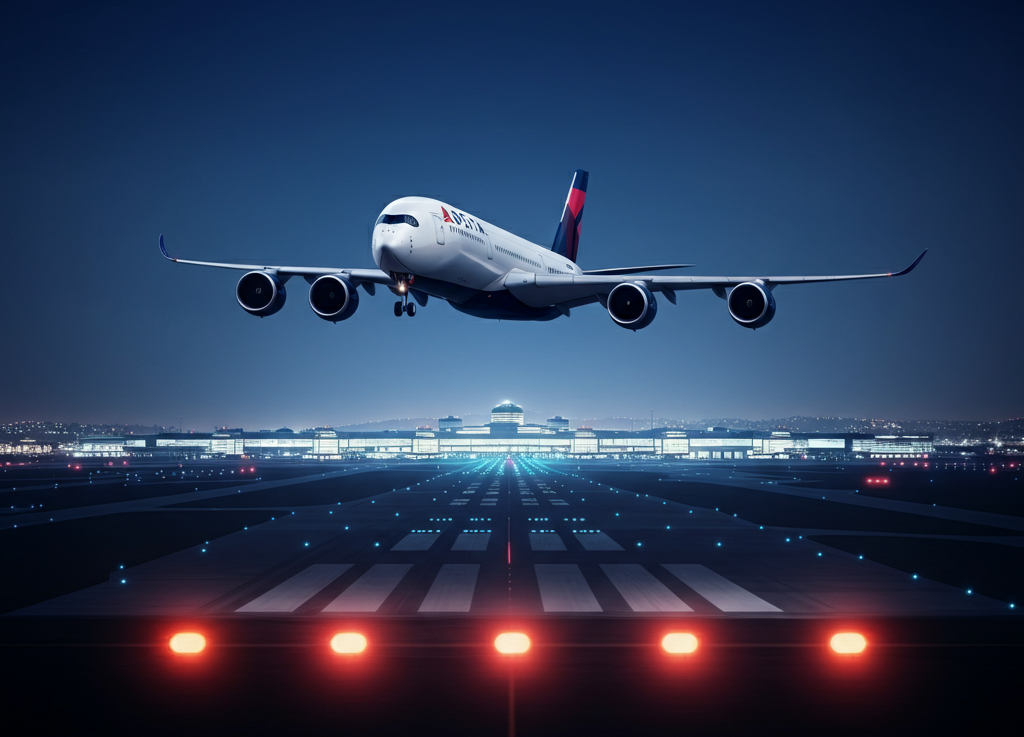Flight disruptions can happen to anyone—often without warning. When Delta flight DL275 diverted LAX on its way from Detroit to Tokyo, the event captured the attention of aviation experts, frequent flyers, and travelers around the world. If you’ve found yourself searching for a thorough, well-sourced account of what really happened and what it means for the future of air travel, you’re in the right place. This article blends technical clarity, industry insight, and a human touch—crafted with decades of aviation experience and data-driven analysis.
Table of Contents
ToggleInside the Delta Flight DL275 Diversion: Key Event Timeline
- Takeoff from Detroit (DTW), May 27, 2025: Delta flight DL275—a modern Airbus A350-900 carrying 287 people—departs for Tokyo Haneda Airport. Weather and systems all look routine.
- Normal Cruise Over the Bering Sea: About six hours into the flight, the aircraft is cruising calmly at 38,000 feet. Pilots perform standard system checks; nothing appears to be wrong—yet.
- First Warning Signs: At around 00:34 UTC, a degradation alert lights up: the anti-ice system—a critical safety measure to prevent hazardous ice buildup—shows a performance drop. Such alerts, though not uncommon, always warrant extra scrutiny by seasoned crews.
- Failure Cascade: Eight minutes later, the problem grows urgent. A complete anti-ice system failure strikes Engine 2. Despite immediate manual intervention, automated and backup systems can’t restore proper functioning.
- Declaring Emergency: At 00:45 UTC, the captain contacts air traffic control with a full “MAYDAY” emergency call. After analyzing options, flight control and the crew agree: LAX offers the technical resources and logistical advantages needed for an emergency landing.
- Safe Touchdown at LAX: Delta flight DL275 makes an emergency descent and lands at Los Angeles International Airport at 01:38 AM local time. Emergency services are ready—but all 287 passengers and crew disembark unharmed. A tense situation, handled with professionalism.
What Went Wrong? Technical Analysis from Aviation Experts
For many travelers, “anti-ice failure” might sound like a technical footnote—but in aviation, it’s a red flag. The anti-ice system on an Airbus A350 takes hot bleed air from the engines and directs it to critical surfaces such as the wings, engine inlets, and sensors, preventing the formation of ice that can dramatically affect an aircraft’s aerodynamics and operational safety. On Delta flight DL275 diverted LAX, technicians later confirmed the problem began with a faulty temperature sensor, leading to a cascading effect that cut off proper heat flow in Engine 2’s anti-ice unit. Even seasoned pilots and advanced automation could not override the failure in-flight. With temperatures dropping at cruising altitude over the North Pacific, any risk of ice makes continued flight a gamble no responsible airline or crew is willing to take. According to independent industry analysis (see: Axis Intelligence, 2025), the decision to divert was not just prudent, but essential for passenger and crew safety.How Delta and LAX Responded: Passenger Experience Matters
Emergencies in the air don’t just test technical skill—they reveal how airlines treat their customers. In the aftermath, Delta quickly activated contingency plans to support affected travelers. Here’s what passengers experienced post-diversion:- Clear Communication: Delta’s customer service teams provided timely updates and directions, balancing transparency with reassurance.
- Compensation and Care: All travelers were provided with hotel accommodations and meal vouchers. Under U.S. compensation policies and EU261 regulation, eligible passengers received additional reimbursement (up to an average of $137 per person for qualifying international itineraries).
- Rebooking and Logistics: Delta staff worked around the clock to rebook passengers onto onward flights. While some travelers waited up to 48 hours for seat availability, most praised the professionalism and empathy shown by the ground teams.
Industry Lessons from Delta Flight DL275 Diverted LAX
This incident wasn’t just a challenge for one plane and its passengers—it’s a valuable case study for global aviation. Here’s what airlines and industry leaders are taking away from DL275’s emergency diversion:- Predictive Maintenance Is the Future: Modern airlines like Delta invest heavily in predictive maintenance using AI and advanced diagnostics. Industry sources estimate that early adoption of predictive systems can prevent similar failures entirely—potentially saving millions in operational costs (DL275’s incident alone carried a direct and indirect price tag close to $5.9 million).
- Exceptional Crew Training Is Non-Negotiable: The calm, systematic response of the flight and ground crews reflects rigorous, ongoing training demanded by major global carriers. Split-second decision-making, teamwork, and crisis communication skills are life-saving assets that separate reputable airlines from the rest.
- The Stakes Go Beyond Dollars: The direct financial hit from a diversion includes immediate costs (fuel, hotels, logistics) and longer-term impacts (brand reputation, customer loyalty). Companies that demonstrate responsibility and transparency—such as openly acknowledging the technical issue and offering rapid support—tend to recover reputation and trust far better in the age of social media scrutiny.

